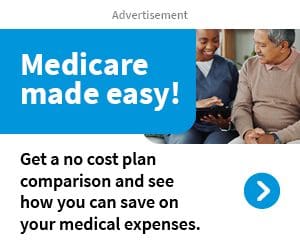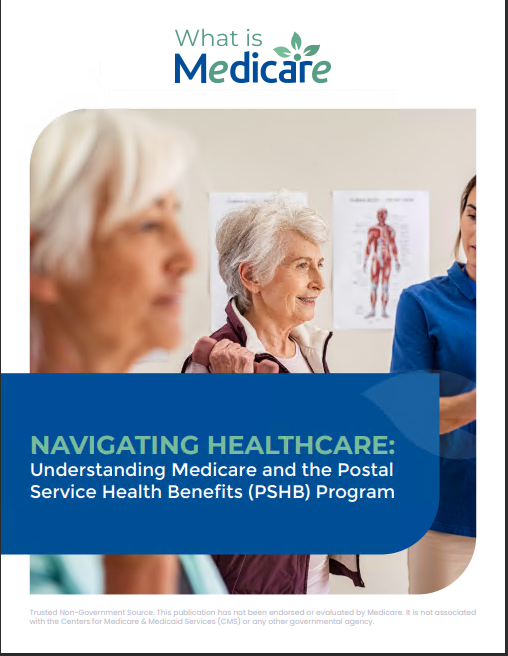Key Takeaways:
- Understanding the differences between Medicare Parts A, B, C, and D can significantly reduce your out-of-pocket healthcare costs.
- Making informed choices about your Medicare coverage helps avoid unexpected expenses, potentially saving you thousands over time.
Why Understanding Medicare Parts Could Save You Thousands in Healthcare Costs
Navigating the complexities of Medicare can be daunting, but understanding the four main parts of Medicare—Parts A, B, C, and D—can make a significant difference in managing your healthcare costs. Each part offers different coverage options and has distinct benefits, making it crucial to comprehend how they work together. Informed decisions about Medicare coverage can help avoid unexpected expenses, ensuring you receive the necessary healthcare services without incurring excessive costs.
Medicare Part A: Hospital Insurance
Medicare Part A primarily covers inpatient hospital care, skilled nursing facility care, hospice care, and limited home healthcare services. It is often referred to as “hospital insurance” because it is designed to cover the costs associated with hospitalization and related services.
Most people do not have to pay a premium for Part A if they or their spouse paid Medicare taxes while working. However, understanding the potential out-of-pocket costs associated with Part A is crucial. For instance, there are deductibles and coinsurance costs that beneficiaries may need to pay, particularly for extended hospital stays or skilled nursing care beyond a certain number of days. By being aware of these potential expenses, individuals can plan accordingly and avoid unexpected bills that can quickly add up.
Medicare Part B: Medical Insurance
Medicare Part B covers outpatient care, doctor visits, preventive services, and some medical supplies. Unlike Part A, Part B requires a monthly premium, which is determined by your income. Additionally, Part B has an annual deductible, and once this is met, you typically pay 20% of the Medicare-approved amount for most doctor services, outpatient therapy, and durable medical equipment.
Understanding the coverage and costs associated with Part B is essential for those who require regular medical care or preventive services. For example, regular doctor visits and outpatient services can accumulate substantial costs, particularly for those managing chronic conditions. By comprehensively understanding Part B, you can better anticipate these costs and explore supplemental coverage options to help manage out-of-pocket expenses.
Medicare Part C: Medicare Advantage Plans
Medicare Part C, also known as Medicare Advantage, is an alternative to Original Medicare (Parts A and B). These plans are offered by private insurance companies and must provide at least the same level of coverage as Original Medicare. However, many Medicare Advantage plans offer additional benefits, such as dental, vision, and hearing coverage, as well as prescription drug coverage.
While Medicare Advantage plans can offer more comprehensive coverage, they also come with different rules, costs, and coverage restrictions compared to Original Medicare. Understanding these differences is critical, as the cost-sharing structure (including premiums, deductibles, and copayments) can vary significantly between plans. Additionally, Medicare Advantage plans often have networks of doctors and hospitals that you must use to get the lowest costs, which may limit your choices. Carefully comparing these plans to your healthcare needs can prevent costly mistakes, ensuring you choose a plan that aligns with your budget and medical requirements.
Medicare Part D: Prescription Drug Coverage
Medicare Part D provides prescription drug coverage and is available to anyone enrolled in Medicare. Part D plans are offered by private insurance companies and help cover the cost of prescription medications. These plans vary in terms of the drugs covered, the cost of prescriptions, and the specific pharmacies that can be used.
One of the key aspects of Medicare Part D is the coverage gap, commonly referred to as the “donut hole.” This is a period where you may pay more out-of-pocket for your prescriptions after you and your plan have spent a certain amount on covered drugs. Understanding how the coverage gap works and when you might enter it can be crucial for managing prescription drug costs effectively. Additionally, each Part D plan has a formulary, which is a list of covered drugs. Knowing which drugs are included in a plan’s formulary and how much they will cost you is vital to avoid unexpected expenses.
The Importance of Coordination Between Medicare Parts
Understanding how the different parts of Medicare work together is essential for maximizing your coverage and minimizing costs. For example, if you have both Medicare Part A and Part B, you will have different types of coverage for inpatient and outpatient care. If you add a Part D plan for prescription drug coverage, you must ensure that it complements your other coverage and meets your medication needs without leading to unnecessary out-of-pocket expenses.
Medicare Advantage plans (Part C) often include prescription drug coverage, but if you opt for Original Medicare (Parts A and B) with a standalone Part D plan, coordinating these coverages effectively is crucial. Failing to coordinate coverage can result in gaps, duplicate coverage, or higher costs. For example, if you enroll in a Medicare Advantage plan that includes prescription drug coverage, enrolling in a standalone Part D plan may not be necessary and could result in a penalty.
Strategies for Reducing Healthcare Costs with Medicare
-
Review Your Plan Annually: Medicare plans can change each year, including costs, coverage options, and provider networks. Reviewing your plan during the Medicare Open Enrollment Period allows you to make changes if your current plan no longer meets your needs. Switching to a plan that better aligns with your healthcare needs can save you money on premiums, copayments, and other out-of-pocket expenses.
-
Consider a Medigap Policy: If you opt for Original Medicare (Parts A and B), you may want to consider purchasing a Medigap policy. Medigap policies are supplemental insurance plans that help cover some of the out-of-pocket costs not covered by Original Medicare, such as copayments, coinsurance, and deductibles. Although these policies require an additional premium, they can provide significant savings on healthcare costs in the long run, especially for those with frequent medical needs.
-
Take Advantage of Preventive Services: Medicare Part B covers many preventive services, such as screenings, vaccinations, and annual wellness visits, often at no cost to the beneficiary. Utilizing these services can help detect health issues early, potentially avoiding costly treatments and hospitalizations down the road. Staying proactive with your health through preventive care is a key strategy in minimizing long-term healthcare expenses.
-
Understand the Medicare Savings Programs: For those with limited income and resources, there are Medicare Savings Programs (MSPs) that can help pay for Medicare premiums, deductibles, and coinsurance. Understanding eligibility criteria and how to apply for these programs can lead to substantial savings, especially if you struggle to afford your Medicare costs.
-
Choose Providers Within Your Network: If you are enrolled in a Medicare Advantage plan, choosing healthcare providers within your plan’s network is critical for minimizing costs. Out-of-network care often comes with higher out-of-pocket expenses, and in some cases, it may not be covered at all. Understanding your plan’s network and sticking to it whenever possible can prevent unexpected medical bills.
How to Avoid Common Medicare Pitfalls
Navigating Medicare without fully understanding its intricacies can lead to costly mistakes. Here are some common pitfalls to avoid:
-
Missing Enrollment Deadlines: Missing key enrollment periods, such as the Initial Enrollment Period (IEP) or the Medicare Open Enrollment Period, can result in penalties and delayed coverage. These penalties can be lifelong, leading to higher premiums and additional costs. Marking important dates on your calendar and understanding when and how to enroll can save you from unnecessary penalties.
-
Ignoring Plan Changes: Failing to review annual plan changes can lead to unexpected costs. For example, if your Part D plan changes its formulary, you may find that a medication you rely on is no longer covered or has become more expensive. Keeping up with changes ensures that your coverage continues to meet your needs without surprises.
-
Overlooking Supplemental Coverage: Not considering supplemental coverage options, such as Medigap or a Medicare Advantage plan, can leave you exposed to high out-of-pocket costs. These plans are designed to fill in the gaps left by Original Medicare, providing additional financial protection. Assessing your healthcare needs and exploring supplemental coverage options can help reduce your overall healthcare expenses.
-
Underestimating the Coverage Gap: The Part D coverage gap can catch many beneficiaries off guard, leading to higher-than-expected prescription drug costs. Planning for the coverage gap and discussing cost-effective alternatives with your healthcare provider can help manage these expenses.
Making Medicare Work for You
Understanding the nuances of Medicare’s various parts and how they interact is key to managing healthcare costs effectively. Each part of Medicare offers unique coverage that, when combined wisely, can provide comprehensive healthcare protection at a manageable cost. By regularly reviewing your coverage, taking advantage of available resources, and staying informed about potential cost-saving strategies, you can make Medicare work for you, potentially saving thousands in healthcare costs over time.
As Medicare continues to evolve, staying informed and proactive is more important than ever. The decisions you make about your Medicare coverage today can have a lasting impact on your financial well-being and access to quality healthcare in the future. Making informed choices and understanding how to navigate the complexities of Medicare can protect your health and your wallet.
Understanding Medicare Costs and Coverage
Comprehensively understanding the different parts of Medicare and how they can be coordinated is essential for managing healthcare expenses effectively. By being proactive, you can reduce your financial burden and ensure you receive the healthcare services you need. Medicare is a powerful tool, but only if used correctly—knowledge is the key to unlocking its full potential.
Contact Information:
Email: [email protected]
Phone: 6865559012








